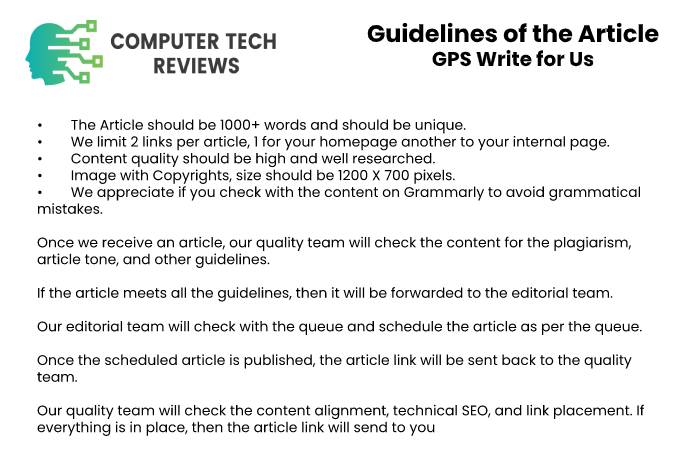GPS Write for Us

The acronym “GPS” has become part of our linguistic habit. Its meaning is the “Global Positioning System. Its use is also widely known: establishing latitude and longitude coordinates anywhere on Earth. Behind these initials, and the position is known continuously, there are a complex satellite system and ground stations.
Origins and evolution of GPS
GPS was initially developed by the United States Department of Defense (DoD) within the NAVSTAR (Navigation Satellite Timing And Ranging) program.
For years, the ships, planes, and land units of the US Army made exclusive use of the system, showing great utility.
Under the pretext of improving air and maritime security, the international community reached a shared-use agreement with the Armed Forces, giving rise in 1995 to GPS’s public use. However, the United States established as a condition the ability to alter the accuracy of positions to safeguard their security and military operations (something that only starts in places of war in certain circumstances and only affects the civil signal).
The satellite positioning system replaced the old LORAN system, whose satellites provided the position under its coverage twice a day. Another equally efficient, although less well-known, positioning system is the one developed by the Russian Space Agency.
GPS members
The GPS Global Positioning System is made up of three sectors or components:
- Space sector: composed of 24 satellites arranged in six orbits at the rate of 4 teams in each orbit. Satellites orbit the Earth at an altitude of 20,200 kilometers (below geostationary satellites). Rotation speed is one revolution of the Earth every 12 hours. It Follows a route with an inclination of 55º to the celestial Equator. And a difference of 90º of the arc of the satellites between them. To this must be added the complete coverage geostationary satellites of the WAAS / EGNOS system.
- Land sector: also called control, this sector deals with correcting the signal obtained from the satellites and possible deviations from the orbit. The land sector comprises nine stations: 1 general, five tracks, and 3 data.
- User sector: composed of antenna, amplifier, and receiver. The team is in charge of selecting the satellites that should provide the information to calculate the position and measure the time between transmissions.
The combination of the three sectors provides time and position with global coverage, ensuring that any user has between 6 and 8 satellites visible on the horizon at all times.
To Write for Us, you can email us at contact@computertechreviews.com
Why Write for Computer Tech Reviews – GPS Write for Us

Search Terms Related to GPS Write for Us
Global
Positioning
Satellite
Radio
Navigation
Space Force
Geolocation
Time
Information
GPS location
Unobstructed
Relatively
Weak
Transmit
Telephonic
Internet
Search Terms for GPS Write for Us
writers wanted
write for us
guest post
contributor guidelines
looking for guest posts
become a guest blogger
guest posts wanted
guest posting guidelines
become an author
submit an article
guest posts wanted
submit post
suggest a post
write for us
guest post
contributor guidelines
contributing writer
Guidelines of the Article – GPS Write for Us

You can send your article to contact@computertechreviews.com
Related Pages:
Data Transmitter Write For Us
Desktop Computer Write For Us
Dongles Write For Us
Ergonomics Write For Us
Finance Write For Us
Gateway Write For Us
Laser Printers Write For Us
Memory Card Write For Us
Multimedia Write For Us
Optical Drives Write For Us
Recent Posts
In-Depth TCL TV Review: Performance and User Feedback
Comprehensive TCL TV Review: Performance Insights Key Highlights TCL TVs give you outstanding picture quality by using things like vibrant…
Celebrating Nintendo Year in Review 2024: A Recap [2025 Update]
Nintendo Year in Review 2024: Highlights and Recap Key Highlights Nintendo’s Year in Review 2024 started on December 18th. The…


